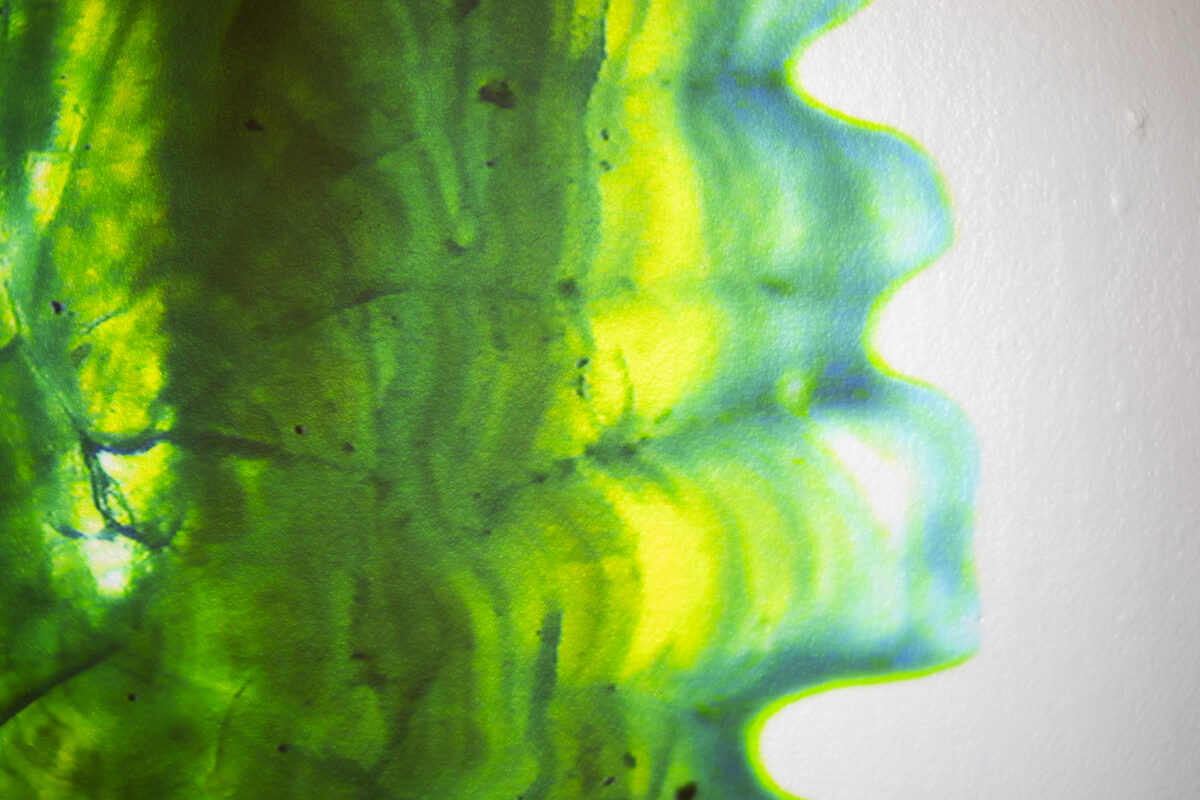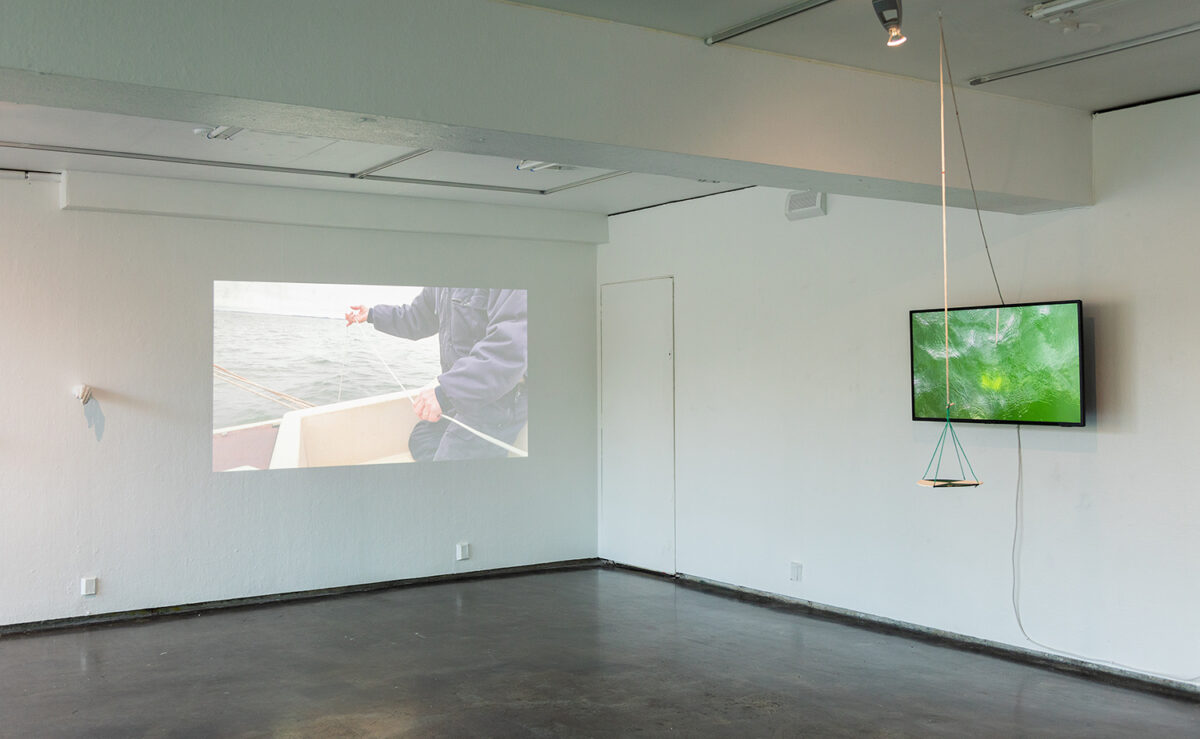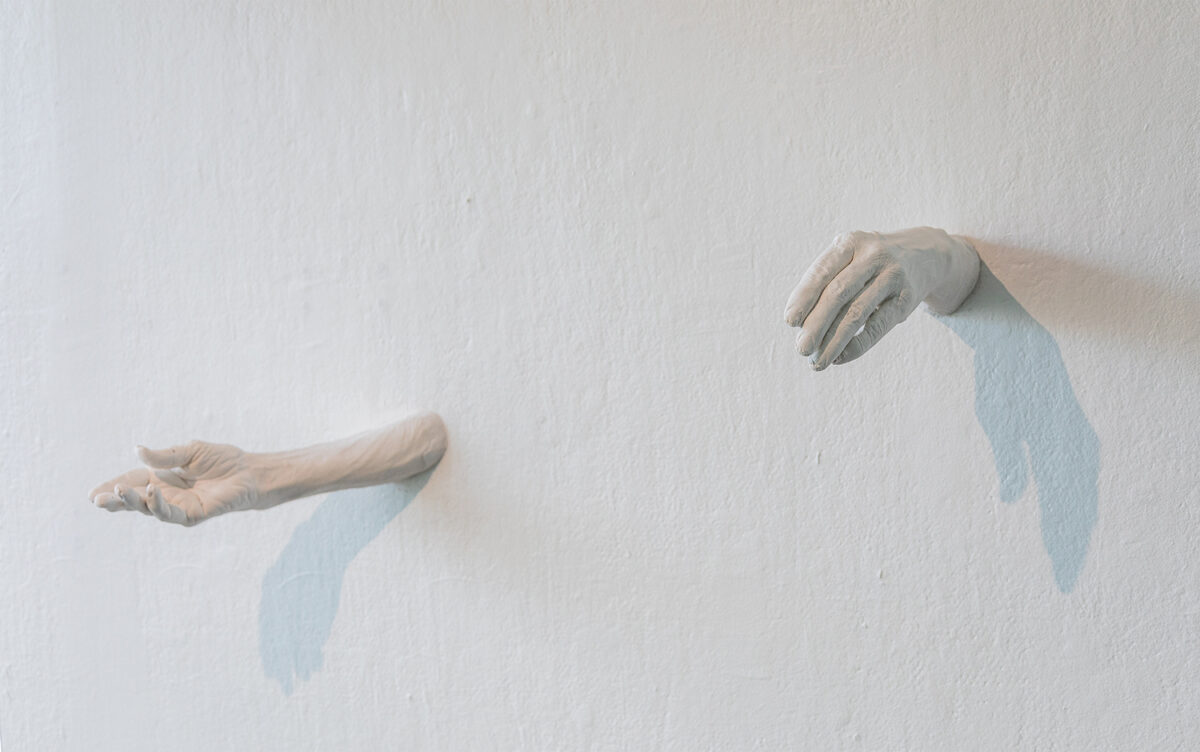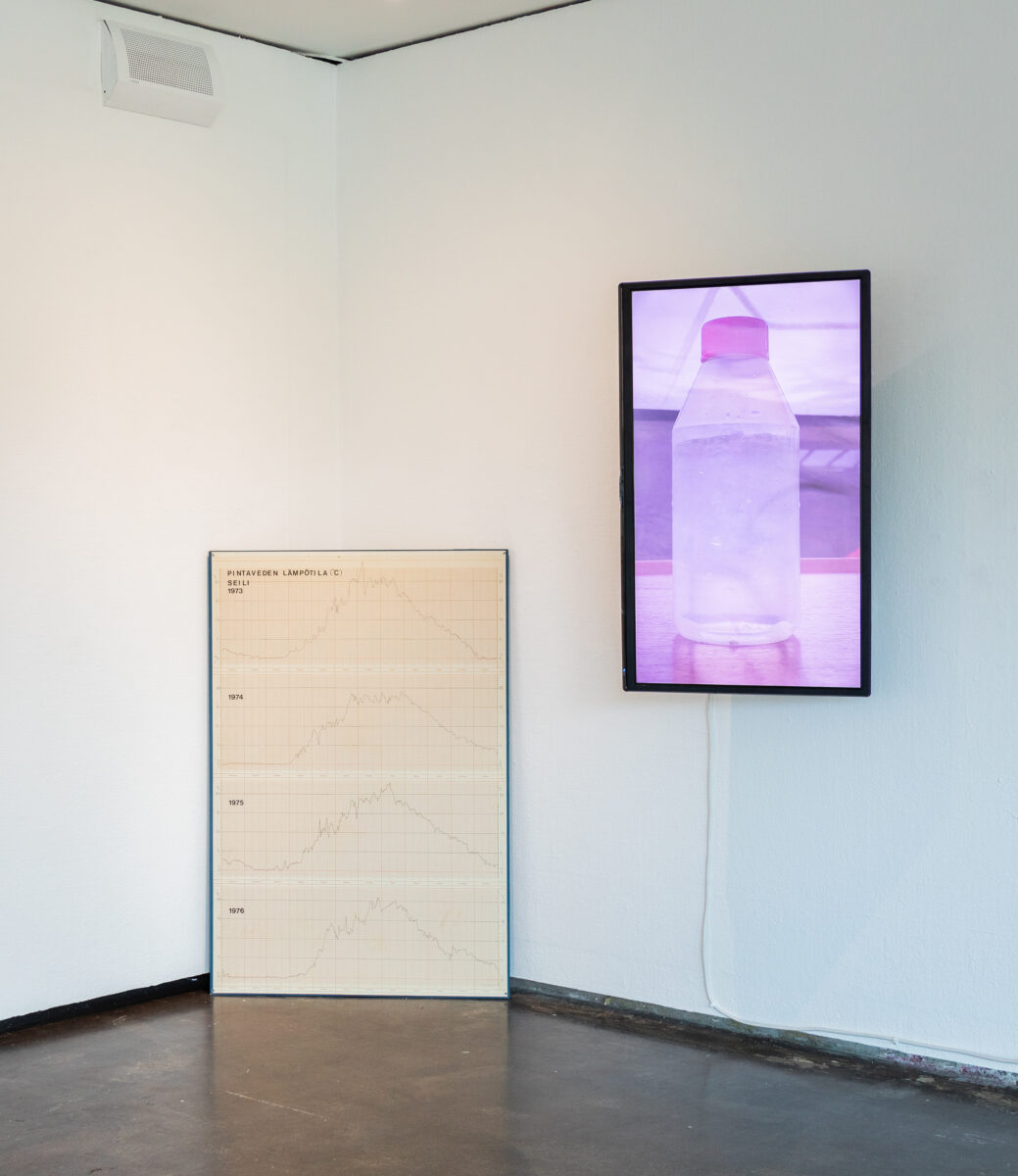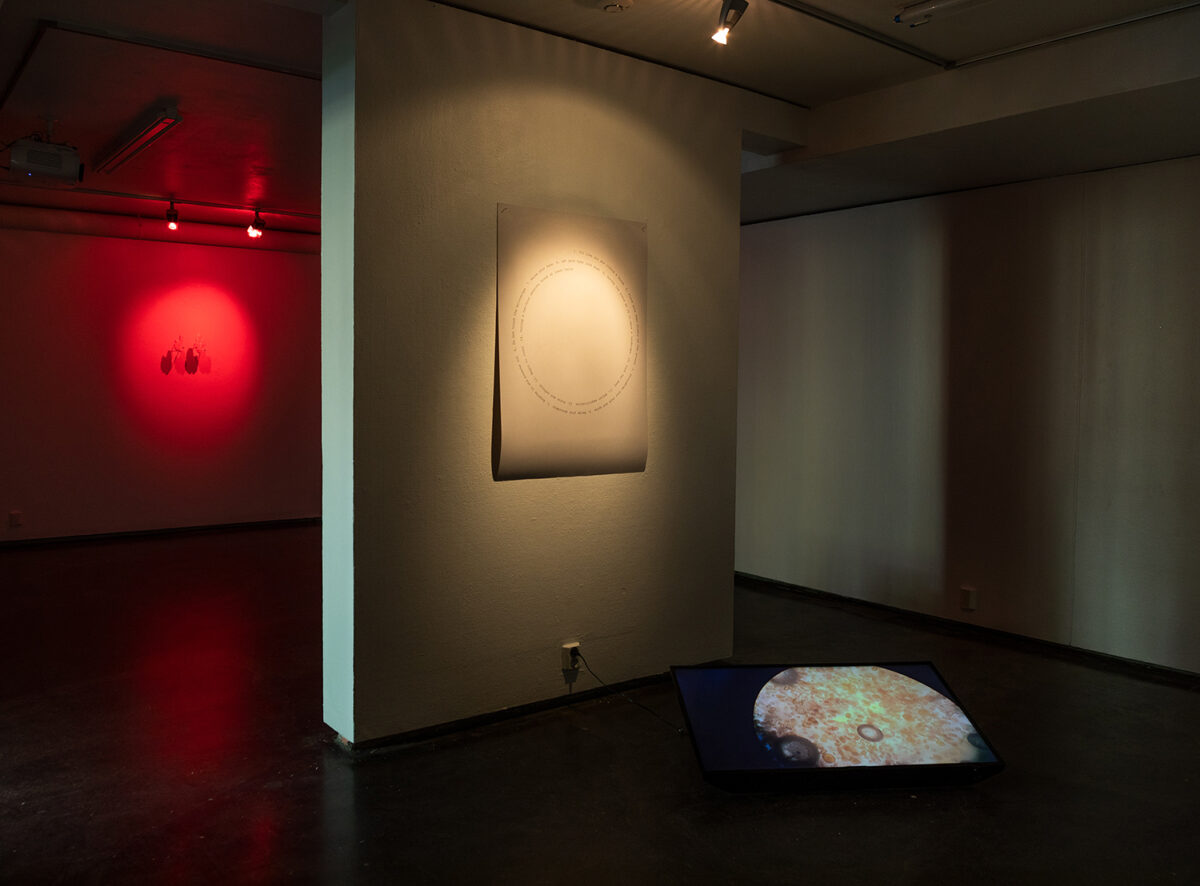Matterlurgy:
Field Casting
The artistic duo Matterlurgy‘s (Helena Hunter and Mark Peter Wright) multi-year engagement with CAA, the island of Seili and the Archipelago Research Institute culminates in the exhibition Field Casting at Titanik Gallery in Turku. The exhibition, which ran from 3.2.-5.3.2023, provided audiences with a chance to engage with the artists’ journey working alongside marine biologists at the Institute during the years 2019-2023, while also familiarising themselves with the ways in which the Baltic Sea is sampled, monitored and modelled.
Field Casting comprises a number of multi-media works spanning the mediums of sculpture, film and sound. The body of work investigates scientific ‘fieldwork’ as a site and subject of study, zooming in on the practices, tools and perspectives embroiled in the production of climate data. It explores the relationship between field practice and automated data collection, and highlights knowledge as an event that is materially entangled with the lives of humans and nonhumans.
In the commissioned work, attention is paid to the embodied knowledges embedded in scientific research, with the artists highlighting the dialogues between the body of the scientist, their tools and technologies, and processes of reading and translating. This can be seen in the piece Field Casting (HD video 04’47 min and plaster casts) in which professor Ilppo Vuorinen’s arms are seen ‘casting the line’ while also being cast in plaster from an alginate mould. Here, the bodily act of ‘casting’ as a mode for monitoring the Baltic Sea is made visible through the scientist’s posture but also through the traces and crevasses left in his hands.
Likewise, Transparent Seas (HD video 02’45 min with sound and an 8” diameter Secchi disc) notes the value of the bodily and tangible processes still used in science today. The video shows the immersion of a Secchi disc – a black and white disc invented by Angelo Secchi in 1865 to measure the transparency of water – into the Baltic Sea. Here, readings rely on the thresholds of vision as observed by the human eye, as well as the haptic threading of the rope, and its one-metre notches, through the hands of the scientist.
Oh Buoy! (HD video 01’13 min) – with its yellow buoy floating autonomously on the horizon – signals the proliferation of technology in modes of monitoring and modelling the Baltic Sea, and questions the increasing absence of the scientist’s body in contemporary science, asking, what else do we loose when the scientist’s body is no longer present? The text score, Sit like you are riding a horse, printed on Alga Carta paper records Ilppo’s embodied protocol for looking through a microscope in a bid to foreground the bodily knowledges which may become forgotten with the automation of data sampling.
Otolithic Evidence (three large format transparency prints on windows) and The Black Box (HD video and stereo sound, 17’45 min, and two 3D otolith prints) hone in on the Baltic herring research carried out by Professor Marjut Rajasilta and Dr Katja Mäkinen at the Institute. Through this installative work, Matterlurgy make visible the otherwise hidden material data accumulating like tree rings in the ear bones of our Baltic kin. These works open up the microscopic matter of the herring, which are, in themselves, producers of climatic data and witnesses of environmental change. The short video, Water is not water, (HD video 03’26 min) delves into the herring’s habitat to reveal the thick realities and vibrant agents – notably plankton – that make up a drop of water.
The commissioned exhibition was accompanied by two public talks: an introduction to the Field Casting with Matterlurgy, professor Jari Hänninen, researcher Katja Mäkinen and curator Taru Elfving, and a tour of the exhibition with professor emeritus Ilppo Vuorinen in conversation with curator Taru Elfving.
Learn more about Matterlurgy’s work
Read CAA’s interview with Matterlurgy
Field Casting Conversation: Matterlurgy, Jari Hänninen, Katja Mäkinen and Taru Elfving
Field Casting is commissioned and produced by CAA in collaboration with the Archipelago Research Institute (University of Turku) as part of the project Spectres in Change. With support from the Kone Foundation, Swedish Cultural Foundation in Finland and Oskar Öflund Foundation. Thanks to Eero Merimaa and sculpture students at Turku University of Applied Sciences, Tom Ranson, and Alex Ball at the Natural History Museum in London, UK.
